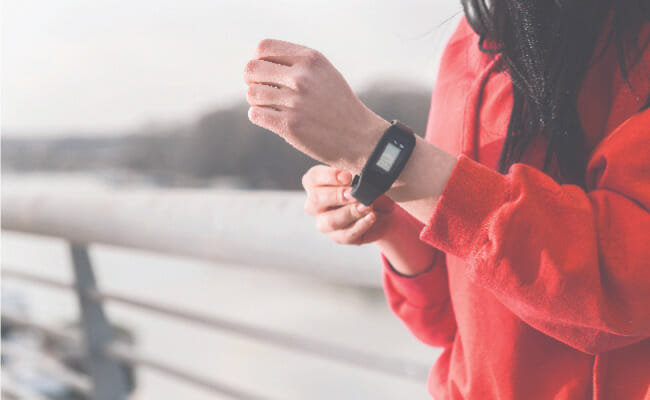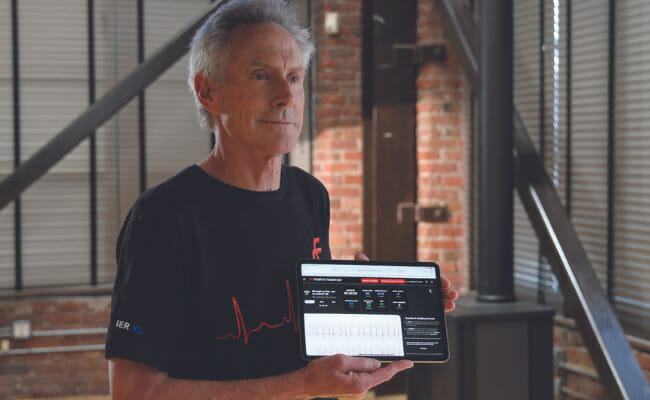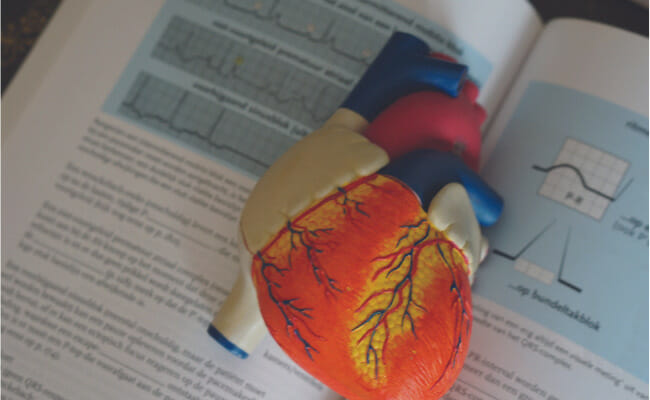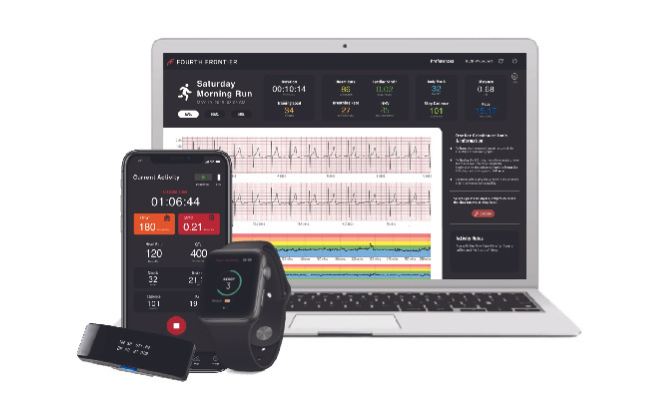Best Portable EKG 2022 [Reviewed & Rated]
As technology continually evolves, so do the ways in which we can improve our health. One such innovation is the portable EKG machine. This small, handheld device can monitor your heart rhythm and blood pressure and provide accurate results in just a few minutes.
So, if you’re looking for a way to keep track of your heart health, a portable EKG may be the right option. Keep reading to learn more about these handy little devices and find out which one is the best fit for you.
What are portable EKGs?

An electrocardiogram, aka EKG or ECG, is a device that records the electrical signals in one’s heart. This allows wearers to monitor their heart rhythm and blood pressure, depending on the device. A portable ECG monitor is an out-of-hospital mobile and often app-supported alternative.
Value of EKG data in achieving health and fitness goals
Both athletes and people with heart conditions employ portable ECGs to monitor their heart rhythm and performance from time to time. You can regularly send the reports generated from such ECG monitoring to your physician for professional advice.
Your doctor can then detect any anomalies upon examination. If needed, the physician may require the user to head to the hospital for a more pointed check-up before recommending medical solutions/therapy.
EKG Types
Although there are more than two types of portable ECGs, we will cover the primary two types – resting ECG and stress ECG. The difference between the two lies in when each device is most effective. The resting ECG monitors the wearer’s heart rhythm when lying down in a convenient posture. The stress or exercise ECG is relevant when exercising, cycling, or strenuous activities.
Regarding the number of leads offered, we can also classify EKGs by lead; for instance, 1-lead recorders and 12-lead recorders. 1-lead ECG systems are popularly used in mobile handheld ECGs.
It is possible to obtain 12-lead recordings from a 1-lead recorder, but the results/leads would be printed after the order. The results are displayed in 12 distinct ways and are so complex that it takes the guidance of a professional doctor to understand the patient’s health properly.
With second-generation ECG recorders, users can send their daily or regular ECG checkup results to the physician via email or other non-email messaging options.
Why portable EKG Devices have become popular
The rise of wearable medical tech products like portable EKGs can be partly attributed to the increase in health awareness and exchange of information from medical professionals to laypeople via the internet.
Today, it’s common to see people donning an Apple Watch with ECG functionalities at work or a Frontier X2 Smart Heart Wearable in the gym. This is a hugely positive change, as it shows that everyday people are starting to take their heart health seriously – and it’s no surprise considering the benefits of wearing a personal ECG monitor.
Non-invasive mode of operation
Before portable EKG devices were available, doctors encountered many cases requiring a patient to undergo an extended monitoring period to reach a reliable diagnosis. In these cases, they would turn to invasive options like implantable cardiac monitors (ILR), mobile cardiac telemetry (MCT), and cardiac event monitoring.
Many patients are understandably reluctant to try these options – ILR requires surgery, and other non-surgical options still need patients to shave and attach peel-and-stick patches to their bodies. The non-invasive and pain-free nature of portable EKGs has led many to adopt this as their preferred method of tracking their heart’s electrical activity.
Cheaper price point
According to a 2017 study by Statista, the price of an implantable cardiac monitoring device was an astronomical 6,682 USD. Most portable ECGs, on the other hand, only cost about 500 to 1000 USD – much cheaper than the conventional methods of carrying out continuous ECG monitoring.
Consistent monitoring of those taking heart medications
Those afflicted with heart disease cannot afford to be retained in the hospital unless there is an emergency. They have to continue living their everyday lives while managing their condition.
Doctors can attend to patients without being physically present by checking the test results obtained from their wearable EKGs. By doing so, they can tell if the drugs prescribed are working as they should and take note of symptoms like irregular heart rhythms in their patients.
Heart attack prevention
Portable EKGs offer valuable clinical data, enabling medical practitioners to monitor a patient’s heart condition and prevent a heart attack. Additionally, by enhancing the diagnostic yield from common arrhythmias, personal ECG monitors help physicians assess risk factors and make reliable and accurate patient prescriptions.
More comprehensive data for accurate diagnoses
Since portable EKGs provide 3-30 times more heart health data than conventional alternatives, doctors can easily detect heart disease or disorder in patients. It’s a win-win for doctors and patients alike.
Although non-professionals can’t read their ECG data, they can share the ECG test data with their physicians. This gives users’ doctors a better idea of the cause and the seriousness of the situation, meaning that serious diseases like coronary artery disease can be identified and treated much more efficiently.
The doctor can attend to emergency patients while keeping an eye on the vital signs of non-emergency clients. Meanwhile, patients can sleep, eat, and move around as they usually do, all while providing more data for medical analysis.
Limitations of Portable EKGs
The advent of the portable ECG monitor is undoubtedly a valuable advancement in medical technology and patient treatment. However, portable EKGs are not without their limitations.
Many ECG monitors use 1-lead recording systems, a downgrade from the standard 12-lead recorder. The implication of using a 1-lead recorder instead of the standard option is that it reduces the accuracy of the ECG data and prints the results one after the other instead of offering an all-encompassing result.
Another limitation of many portable EKGs is how movement affects the continuous recording capacity. These devices require patients to lie on the bed while conducting a test. When working out, patients must pause for about a minute before recording the effect of exercising on their hearts.
The placement of some of these portable devices hampers their ability to get quality results. Some portable EKGs, like Apple watches, require you to wear them on your wrist to function, while others need you to touch them. Both methods are not as accurate as chest strap placements.
The Frontier X2 portable EKG is light years ahead of its peers. It offers continuous EKG, has a battery life that can last about two weeks, and uses chest strap placement to record accurate clinical data. In the next section, we will discuss the features of the Frontier X2 in detail and why we prefer it over other portable EKG devices.
The Solution? Frontier X2
When words fail to describe your sharp but ephemeral heart discomfort, the Frontier X2 will be your witness. With a battery that can last for about two weeks, you can capture a diverse range of events occurring within your coronary system (heart network).
Fourth Frontier’s Frontier X2 bridges the gap between home-recorded data and hospital-recorded data. You can monitor your heart rate, rhythm, strain, and many more heart reactions while sleeping, resting, or working out. You can also set up the Frontier X2 to give you heart alerts when certain intervals are exceeded. That way, you can quickly preempt and avoid a heart attack when you experience symptoms like chest pain.
The more test data you provide your physician, the better the feedback you will get from them. The Frontier X2 EKG’s test results best explain the irregular heartbeat rhythm you experience when jogging.
Most ECG devices aren’t smart; they only work when resting. A proper stress ECG must be wearable, innovative, and easy to use (on the wrist or strapped around the chest).
The Frontier X2 EKG is a revolutionary product that allows you to track your heart performance on the go. There is no need for an awkward 30-second pause between exercise routines to perform heart examinations; the Frontier X2 offers precise data even when your body moves during exercise.
Unique Features of the Frontier X2
- Examine your heart when at rest and during exercise.
- It helps you preempt heart attacks by reporting real-time heart strain alerts.
- Can self-report with the aid of its AI-programmed system.
- Has reliable battery power.
- Water-resistant (when within 1.5 water depth).
- Compatible with any device.
- Share test results with ease.
- Compatible with BLE digital watches.
- App-supported.
- Detects a wide range of heart diseases.
Final Thoughts
A portable EKG monitoring device may be the right option. Especially if you’re looking for a way to keep track of your heart health. With an ECG monitor, you can monitor your heart rhythm and blood pressure quickly and conveniently.
Fourth Frontier has created the latest and most advanced portable ECG monitor on the market. The Frontier X2 offers accurate results in just a few minutes. This device can give you peace of mind. As you can be sure that you’re making the best decision for your health. Order your Frontier X2 today!







